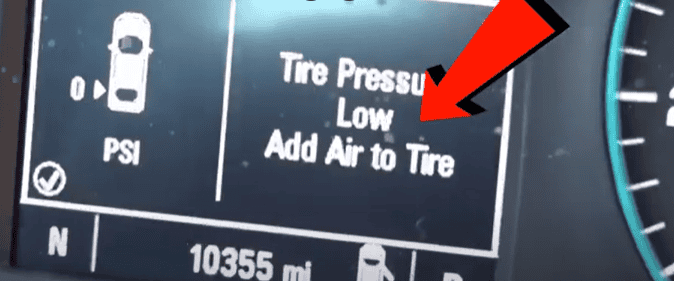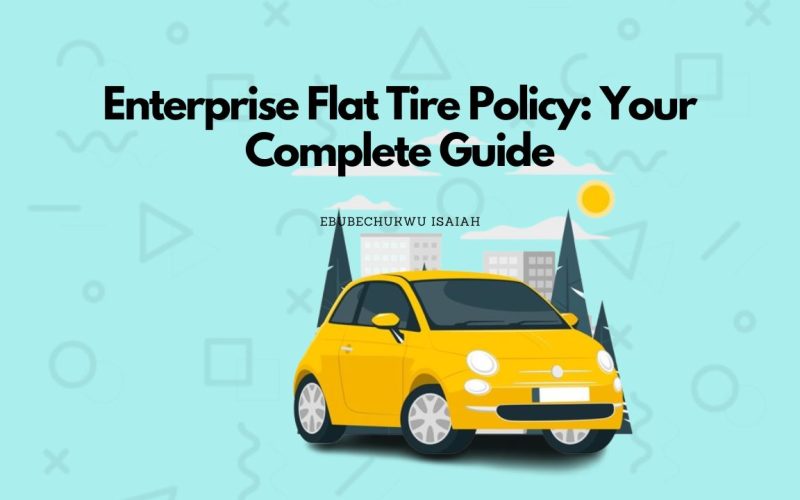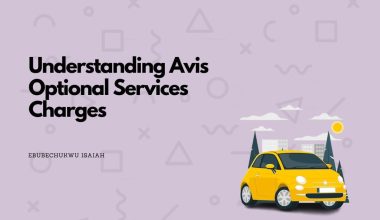Have you ever wondered what would happen if you got a flat tire while driving a rental car? I certainly have, and after experiencing this situation firsthand with Enterprise, I’ve gained valuable insights that I’m eager to share with you.
The Basics of Enterprise’s Tire Coverage

When I first encountered a flat tire in my Enterprise rental, I was relieved to discover their comprehensive approach to tire-related incidents.
Enterprise includes basic tire protection in their standard rental agreement, but it’s essential to understand what this covers—and what it doesn’t.
The standard coverage typically includes:
- Tire damage from normal road hazards
- Basic roadside assistance for tire-related issues
- Replacement of flat tires during your rental period
However, you should note that this coverage doesn’t extend to tire damage resulting from negligence or intentional misuse.
For instance, if you drive on a completely flat tire and damage the wheel rim, you might be responsible for those additional repairs.
What to Do When You Get a Flat Tire
If you get a flat tire on an Enterprise rental, here’s what you can do. If you’re close to an Enterprise office, you might be able to swing by and get the car swapped out.
But if you’re far away or can’t drive safely, you’ll need to take care of the tire yourself.
Enterprise usually has a spare tire in the car for you to use if you get a flat. Just remember, spares are meant to be temporary fixes, so keep your speed under 50 mph until you can get it fully sorted.
Once the spare’s on, let Enterprise know what’s up so they can give you the next steps.
If there’s no spare or you can’t use it, Enterprise may suggest going to one of their partner shops like Firestone or Bridgestone.
This can sometimes make billing easier and might save you some cash. But if that’s not an option, any local tire shop should do the trick.
If you do end up at a local shop, hang onto the receipt. Enterprise might reimburse you, but this isn’t always guaranteed, especially if you didn’t check with them first.
In some places, like Europe, tire repairs are definitely on you, so it’s a good idea to check the rental agreement or think about adding on Roadside Assistance Protection (RAP) before you drive off.
Additional Protection Options and Recommendations
While basic tire coverage offers good protection, you might want to consider Enterprise’s additional coverage options for complete peace of mind.
Through my research and personal experience, I’ve found that their Roadside Assistance Protection (RAP) package can be particularly valuable.
The RSP package includes:
- Enhanced roadside assistance coverage
- Lock-out service
- Battery jump-start service
- Emergency fuel delivery
- Coverage for service call fees
You’re probably wondering if the extra cost is worth it. In my assessment, if you’re traveling in remote areas or during off-hours, the additional protection can save you both money and stress.
The package typically costs between $6-12 per day, depending on your location and vehicle type.
Something many renters don’t realize is that personal auto insurance often doesn’t cover rental car tire damage the same way it might for your own vehicle.
I learned this the hard way before I started opting for comprehensive coverage.
But regardless, keep in mind that this is not an insurance policy; consider existing coverage before purchasing.
Pro Tips for Enterprise Renters
Before you hit the road, I recommend taking these preventive steps:
- Inspect all tires (including the spare) during your initial walk-around
- Document any existing tire damage with photos
- Save Enterprise’s roadside assistance number in your phone
- Review your insurance coverage and rental agreement carefully
- Check tire pressure before long trips
Keep in mind that you have the right to refuse a vehicle if you notice any tire issues during the initial inspection.
I once had to request a different car because I spotted a concerning bulge in one of the tires—Enterprise handled the switch promptly and professionally.
Looking Forward: Your Smart Rental Strategy
As you plan your next Enterprise rental, take a moment to consider your driving plans and risk tolerance.
Will you be traveling through remote areas? Driving in challenging weather conditions? These factors should influence your decision about additional coverage options.
For peace of mind during your rental period, I recommend:
- Understanding the basic tire coverage included in your rental
- Considering supplemental protection based on your travel plans
- Knowing the proper procedures for tire-related incidents
- Keeping important contact information readily available
The goal isn’t just to handle flat tire situations when they arise—it’s to ensure you’re adequately prepared before they happen.
Through my experiences with Enterprise, I’ve learned that their tire policy strikes a balance between protection and practicality, but knowing how to navigate it is key to a smooth rental experience.
Stay safe, stay informed, and enjoy your journey with the confidence that comes from knowing you’re protected against one of driving’s most common mishaps.






